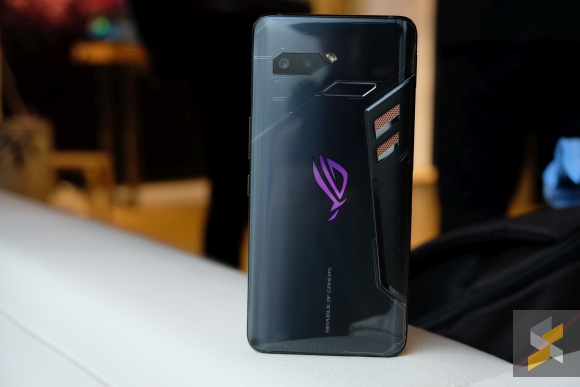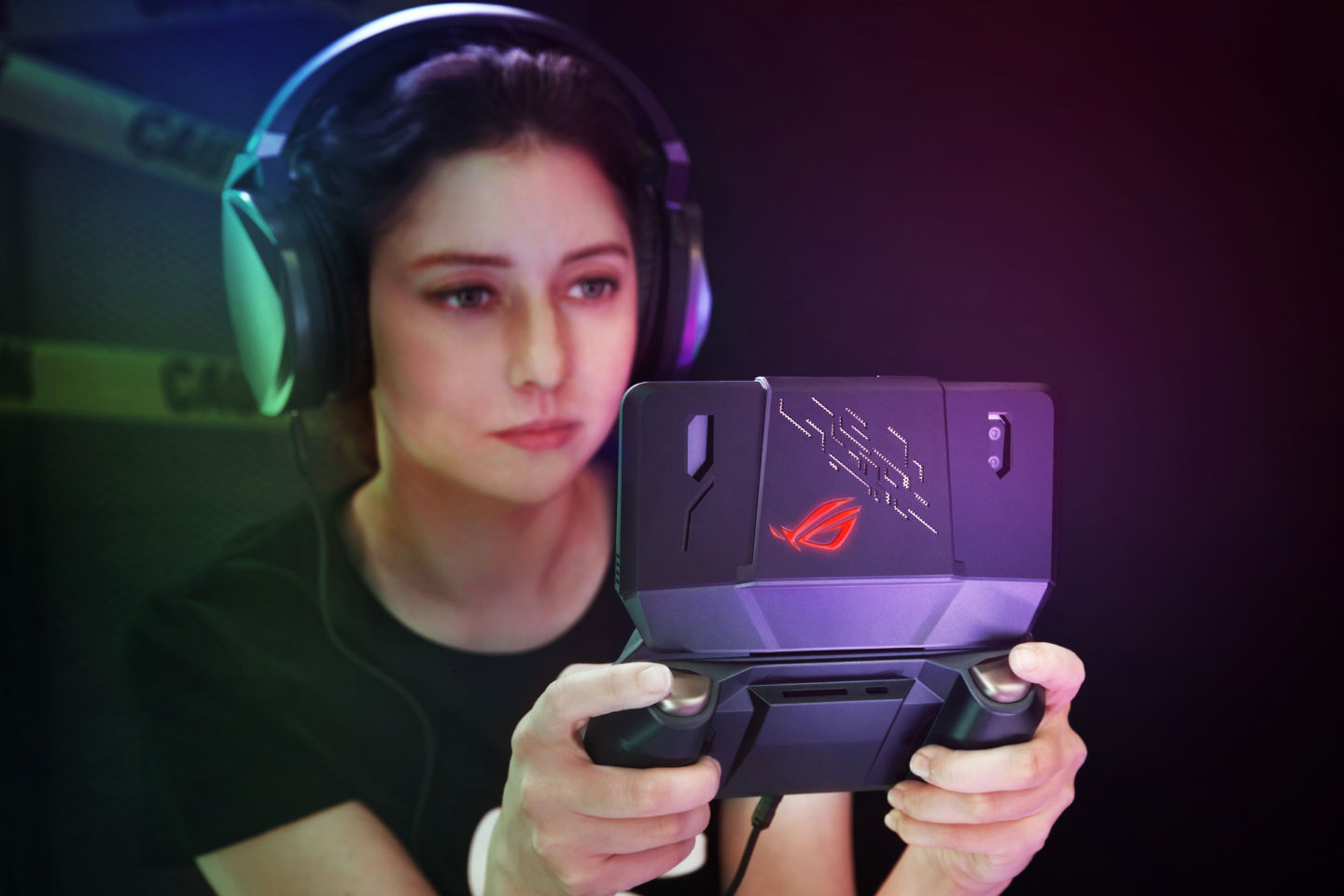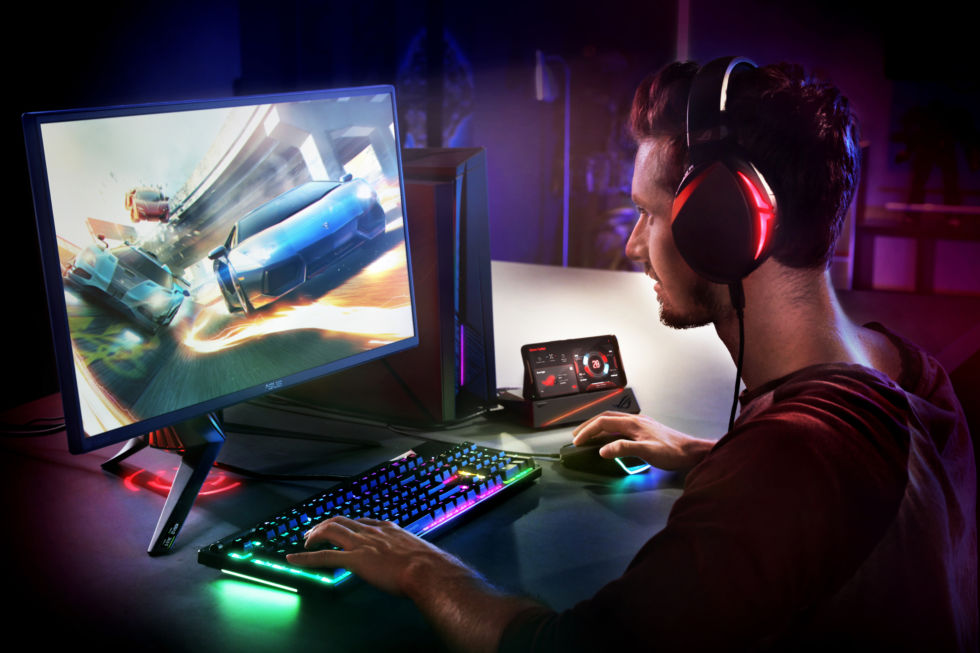After the Razer phone, Sony Xperia Play, and I guess the Nokia N-Gage, someone is trying to make a gaming smartphone again. This time it's Asus, which has tapped its PC gaming sub-brand, "Republic of Gamers," to create the Asus ROG phone.

Things get a bit more interesting with the port selection. In addition to the usual bottom-mounted USB-C 2.0 port and (woo) a headphone jack, there's also a second side-mounted port for Asus' collection of accessories. Engadget's hands-on of the device describes this port as two "conjoined USB-C ports." Asus just calls it a "custom" port that supports USB 3.1 Gen 1, 4K video over DisplayPort 1.4, and Asus' 20W "HyperCharge" technology.
Also Read: Asus Zenfone Max Pro M1 64GB Brief Description Review
Three ultrasonic sensors are located on the side of the ROG. In landscape, two of the sensors act as shoulder buttons and are programmable to trigger any on-screen action. In portrait, they work just like HTC's
This is a "gamer" phone, so of course there is the requisite hyper-aggressive design motif in the hardware and software. Every feature is cut into the phone with a sharp angular design, and there was no way this phone was leaving the ROG factory without a light-up RGB logo on the back and configurable lighting schemes. The back of the phone actually has cooling vents, which, combined with the vapor cooling system, allow the throttle-happy Snapdragon chip to run at peak performance for five times longer than normal. Despite the cooling holes, the ROG phone is still, somehow, "water-resistant," according to Asus.
For even more cooling, Asus is including a clip-on fan. The "AeroActive Cooler" leeches power from the double USB port on the side and provides a pass-through USB port, another headphone jack, and another light-up RGB logo. The headphone jack and USB port here are in addition to the ones on the bottom, which are in a better orientation for use while landscape gaming.

Of course, this runs Android—Android 8.1, to be exact—so any decent games for your gaming phone will be few and far between. Asus is mostly demoing the phone with the online shooter PlayerUnknown's Battlegrounds, one of the tiny handful of Android games that isn't a casual gaming snoozefest.
The Accessories
You can also buy an ecosystem of accessories for your gaming phone: a clip-on game controller, a crazy Nintendo DS-style dual-screen clamshell attachment, and a desktop dock that allows the phone to power a monitor, mouse, and keyboard.
The dual-screen handheld is the "TwinView Dock." This clamshell device stores the phone in the top half, while the bottom half has another six-inch, 2160×1080 AMOLED display, another set of speakers, controller-style grips, real shoulder buttons, a 6,000mAh battery, and another cooling fan. There's yet another headphone-jack pass through between the controller grips, USB-C on the back, and another RGB logo. No one seems exactly sure what the dual-screen setup is for. No third-party apps support a dual-screen view, but you can use Android's built-in split-screen support to have one app in the top and one in the bottom. Asus hopes game developers will build special features for the extra screen. (Good luck with that, Asus.) It seems really odd to me that the bottom section doesn't have physical buttons and analog sticks, like the Nvidia Shield Portable.

For those physical buttons and analog sticks, Asus teamed up with Gamevice to make a special grip for the ROG phone. This has everything you would expect from a console controller: dual analog sticks, a D-Pad, four face buttons, and four shoulder buttons. There's also a 60GHz 802.11ad Wi-Fi dock that can wirelessly beam your gaming content to a TV. Asus isn't providing a picture of the TV dock, though.
Just like the Samsung DeX dock, Asus also has a "Mobile Desktop Dock" that allows the phone to power a monitor, mouse, and keyboard in case you have an empty PC setup lying around. The dock has one USB-C port (for power), four USB-A ports, Ethernet, DisplayPort, HDMI, a 3.5mm S/PDIF port, and a 3.5mm microphone jack.

This seems like an awful lot of work for a concept as questionable as an Android gaming device. Plus, how much is all of this going to cost? With special parts like a speed-binned, up-clocked Snapdragon SoC, a 90HZ OLED, three USB ports, and a cooling fan, I have to imagine the phone itself is pretty expensive. We're also easily looking at hundreds of dollars of accessories. Do you really want to spend all that just to plug into a game ecosystem where "gaming" usually means Candy Crush?
Listing image by Asus


Post a Comment